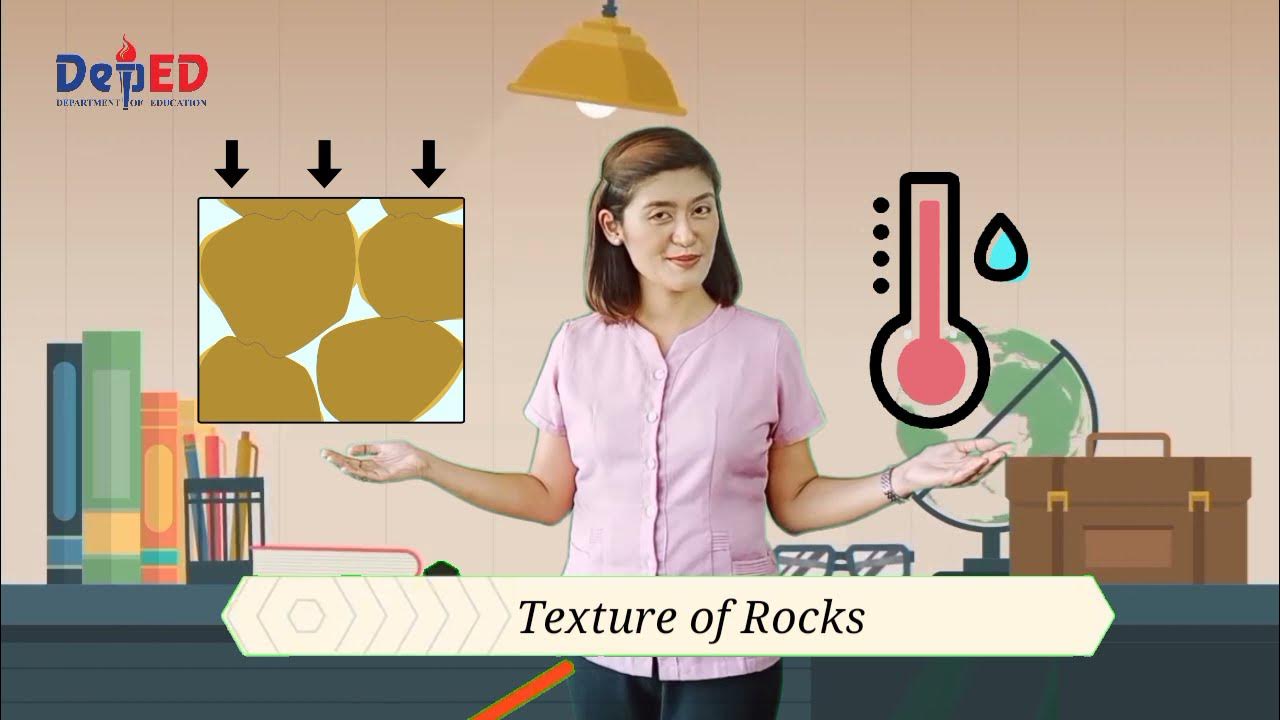Lecture 28 Metamorphic Reactions part 1
Summary
TLDRThis video introduces the concept of metamorphic reactions, explaining how they involve the formation and consumption of minerals during metamorphism. It covers isograds, which are lines marking the first appearance of a new mineral phase, and how experimental and theoretical data help locate reactions in PTX space. The video delves into different metamorphic reactions such as polymorphic phase transformations, exsolution, ion exchange, and redox reactions, emphasizing their role in metamorphic processes. The interaction between fluid-rock and mineral reactions, as well as the impact of composition on reaction conditions, are also discussed. The video is part of a series that explores high-pressure, low-temperature metamorphism.
Takeaways
- 😀 Metamorphic reactions are responsible for introducing or consuming mineral phases during metamorphism.
- 😀 Isograds mark the first appearance of a new mineral phase as metamorphism progresses, but a deeper understanding of reactions and conditions enhances our comprehension of metamorphic processes.
- 😀 Single-component polymorphic phase transformations, like those in calcium carbonate, are some of the simplest systems in metamorphic petrology.
- 😀 Polymorph transitions depend largely on temperature and pressure, with compositional changes having minimal effects in most cases.
- 😀 Calcium carbonate polymorphs (calcite and aragonite) are stable at different pressures, providing valuable insight into pressure-temperature conditions of metamorphism.
- 😀 Exsolution reactions occur when solid solution minerals undergo separation, leading to crystallographically oriented rods or laminae as minerals unmix during cooling or decompression.
- 😀 Continuous reactions involve mineral phases that coexist over a range of temperature or metamorphic grade, with changes in their compositions as the reaction progresses.
- 😀 Discontinuous reactions happen at constant temperature, where one reactant is consumed entirely before the temperature changes.
- 😀 Ion exchange reactions occur between minerals when cations, like iron and magnesium, are exchanged, affecting the mineral composition without changing the modal amount of phases.
- 😀 Redox reactions involve changes in the oxidation state of ions or ion complexes, such as the conversion between Fe(II) and Fe(III), impacting mineral stability and behavior.
- 😀 Fluid-rock interactions, like hydrolysis and albitization, influence mineral compositions by dissolving components in equilibrium with the rock, contributing to metamorphic changes.
Q & A
What is the concept of an isograd in metamorphic petrology?
-An isograd is a line in the field marking the first appearance of a new mineral phase, or one that progresses with an increase in metamorphic grade. It indicates changes in the mineral assemblage due to metamorphism.
How do polymorphic transformations help in understanding metamorphic conditions?
-Polymorphic transformations, such as those seen in silica or calcium carbonate phases, depend primarily on temperature and pressure. By studying the polymorphs in a rock, petrologists can estimate the pressure and temperature conditions under which the rock formed.
Why do polymorphs like aragonite and calcite occur at different pressures?
-Aragonite and calcite are polymorphs of calcium carbonate that are stable at different pressures. Aragonite is stable at higher pressures, while calcite is stable at lower pressures. The stability depends on the pressure-temperature conditions present during metamorphism.
What does metastable coexistence of polymorphs indicate?
-Metastable coexistence of polymorphs suggests that one polymorph may remain stable in a non-equilibrium state due to small differences in free energy, temperature, or pressure, even when another polymorph should be stable in equilibrium.
What is exsolution in metamorphic rocks, and how does it manifest?
-Exsolution is the process where a solid solution mineral series unmixes during cooling or decompression. This results in the formation of distinct mineral phases, such as laminae or separated grains, which may be observed under the microscope.
How do composition differences between units affect the isograd in the field?
-The isograd, or the first appearance of a new mineral phase, can be offset in different rock units due to differences in their bulk composition. These variations influence the specific metamorphic reactions that occur, leading to different grades of metamorphism in each unit.
What is the difference between continuous and discontinuous reactions in metamorphic petrology?
-In continuous reactions, temperature and composition vary over a grade interval, with minerals present over a range of conditions. In contrast, discontinuous reactions occur at a constant temperature, where one phase is completely consumed before another forms.
What is the role of ion exchange reactions in metamorphic rocks?
-Ion exchange reactions involve the reciprocal exchange of components, typically cations, between minerals. This results in changes in the composition of the minerals but not in their modal amounts. An example is the exchange of iron and magnesium between garnet and pyroxene.
How do redox reactions affect mineral stability in metamorphism?
-Redox reactions involve changes in the oxidation state of ions, such as the transition from Fe2+ to Fe3+. These reactions can affect the stability and occurrence of minerals, such as the conversion between hematite (Fe2O3) and magnetite (Fe3O4) during metamorphism.
What role do fluids play in metamorphic reactions?
-Fluids play a crucial role in metamorphic reactions by dissolving and transporting chemical components. Fluid-rock interactions, such as the hydrolysis of feldspar or other reactions, influence the formation of minerals and can affect the overall composition and stability of metamorphic rocks.
Outlines

This section is available to paid users only. Please upgrade to access this part.
Upgrade NowMindmap

This section is available to paid users only. Please upgrade to access this part.
Upgrade NowKeywords

This section is available to paid users only. Please upgrade to access this part.
Upgrade NowHighlights

This section is available to paid users only. Please upgrade to access this part.
Upgrade NowTranscripts

This section is available to paid users only. Please upgrade to access this part.
Upgrade Now5.0 / 5 (0 votes)





